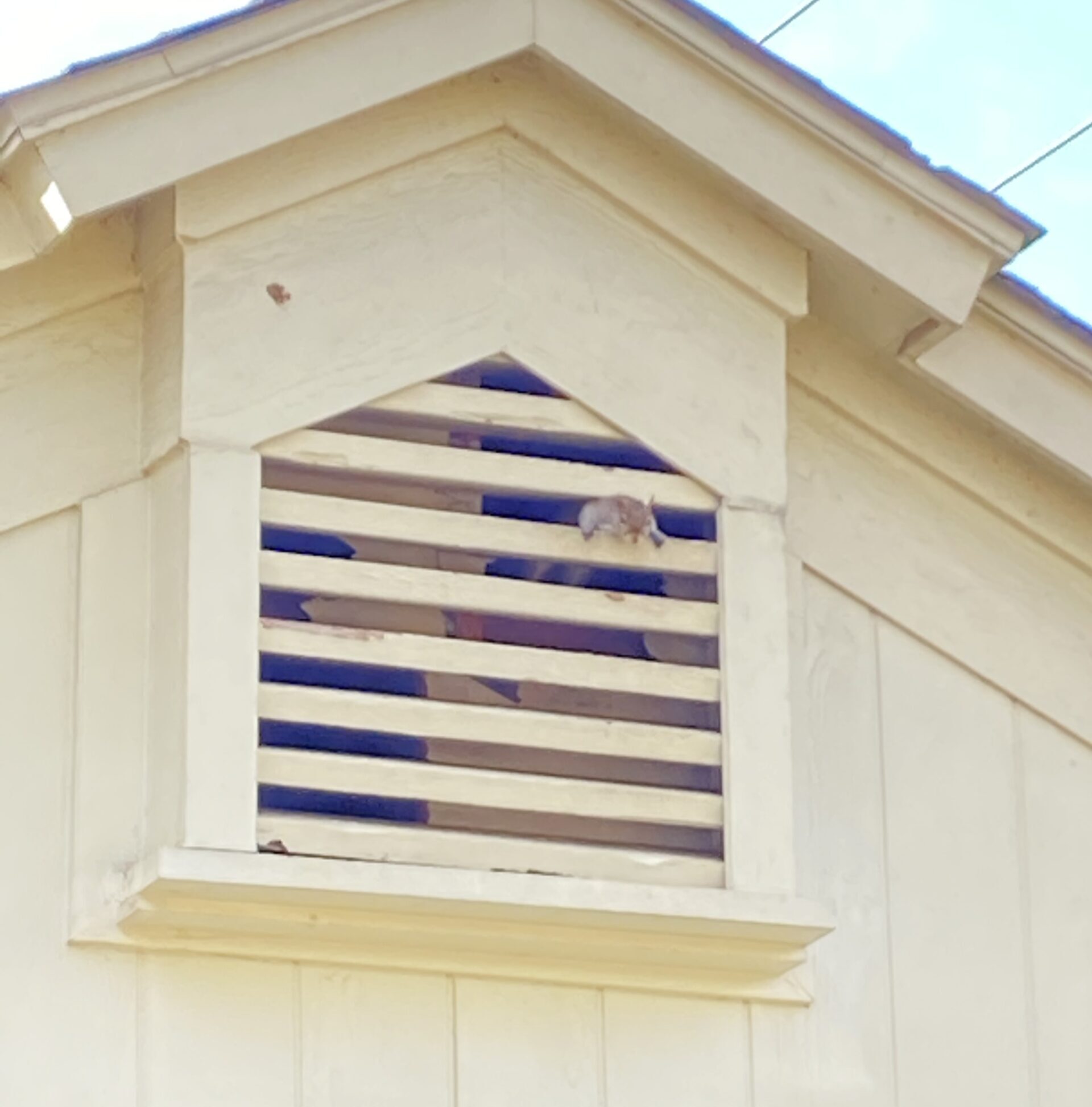
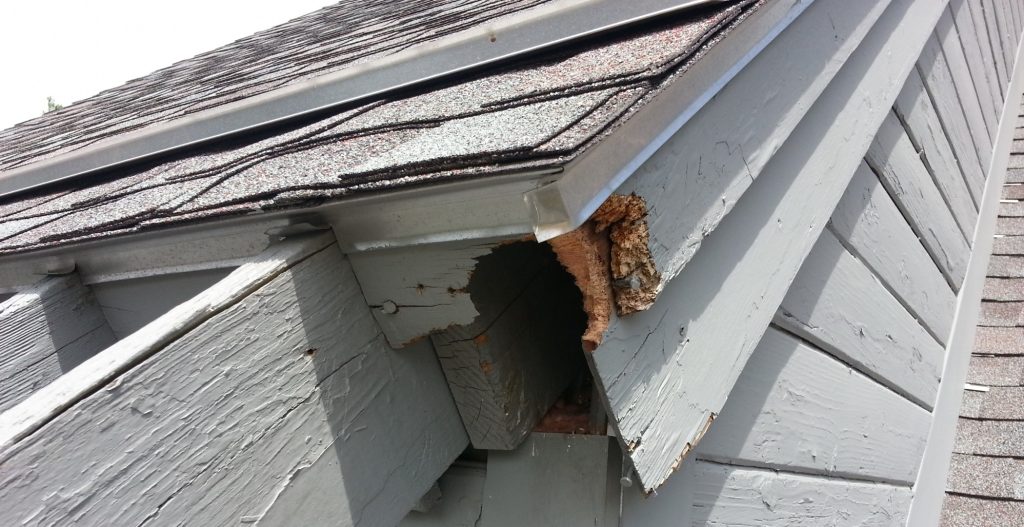
Do You Have a Squirrel in the House?
Find a Critter Control near you
Squirrels might be adorable when scampering about the yard, but they quickly lose their charm when living within a home’s walls or attic. Squirrels are energetic and nimble creatures that excel at climbing and leaping.
Like most nuisance pests, they’ve become accustomed to living among people because as urban and suburban areas grow, their habitats shrink. So when they need a warm, secure place to nest for the winter and raise their young, squirrels in houses become a problem. Squirrel entry holes are commonly along the roof which provides easy access to attics and walls.
Squirrel damage to homes is serious. Contact Critter Control to learn how to get rid of a squirrel in your home.
Signs of a Squirrel Infestation in Your House
Some of the most common signs of squirrels in your house:
- Strange noises. The sounds squirrels make are often described as scurrying, scampering noises. You might also hear chewing or gnawing sounds. You might also hear the rolling sounds of acorns or nuts across your attic.
- Squirrel droppings – Squirrel feces are often confused for rat droppings. While rat and squirrel droppings do look similar—dark brown to black with blunted ends, around 3/8 of an inch long—they are found in different places around the home.
- Exterior damage to your house- The most common squirrel damage to the exterior of the house are around entry points like soffits, shingles, and fascia boards.
- Interior damage in attic – Inside an attic squirrels can build a nest with shredded paper, cardboard, fabric, and bits of insulation.
- Strange odors- Squirrel droppings, urine, and nests can create bad odors in your house that resemble ammonia.
- Watermarks – Urine can eventually seep from the attic and run down your walls.
What Happens if a Squirrel Gets in your House?
Squirrel problems in your house include becoming a nuisance, damaging your home, and potentially spreading diseases to you and your family.
Squirrels are active in the early mornings, and the most common complaint from homeowners with a squirrel infestation is disrupting noises. Squirrels can wake you and your family up early.
Squirrels damage your home. They gnaw on materials in your house like your air ducts, electrical wires, and wood and metal. inside your attic or walls, squirrels build nests with available materials like insulation, cardboard, fabric, or paper.
Squirrels carry diseases that can spread to your family like salmonellosis, ringworm, and leptospirosis. Squirrels also carry parasites like fleas that can infect you or your pets.
The Most Common Squirrel Entry Points
Squirrels only need a gap of 1.5 inches to gain entry. The most common places where squirrels find entry into your attic include:
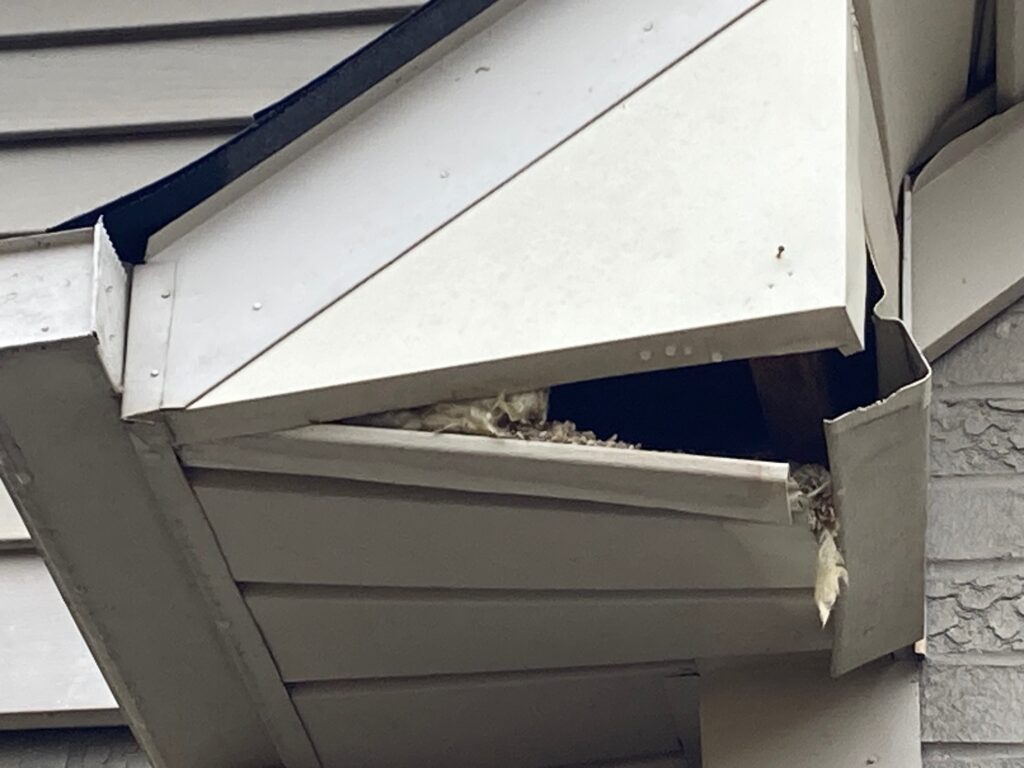
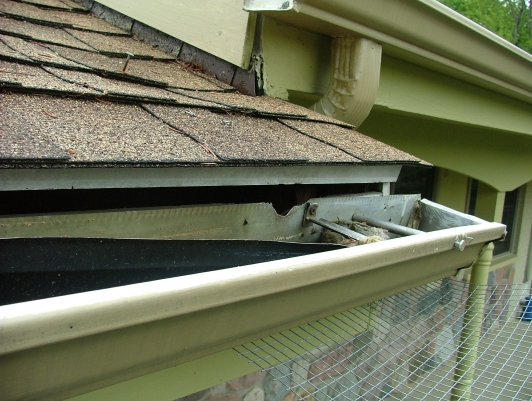
Fascia Boards – These are thin, longboards that run along the lower outer edge of a roof, covering the entire roofline. They help keep water out.
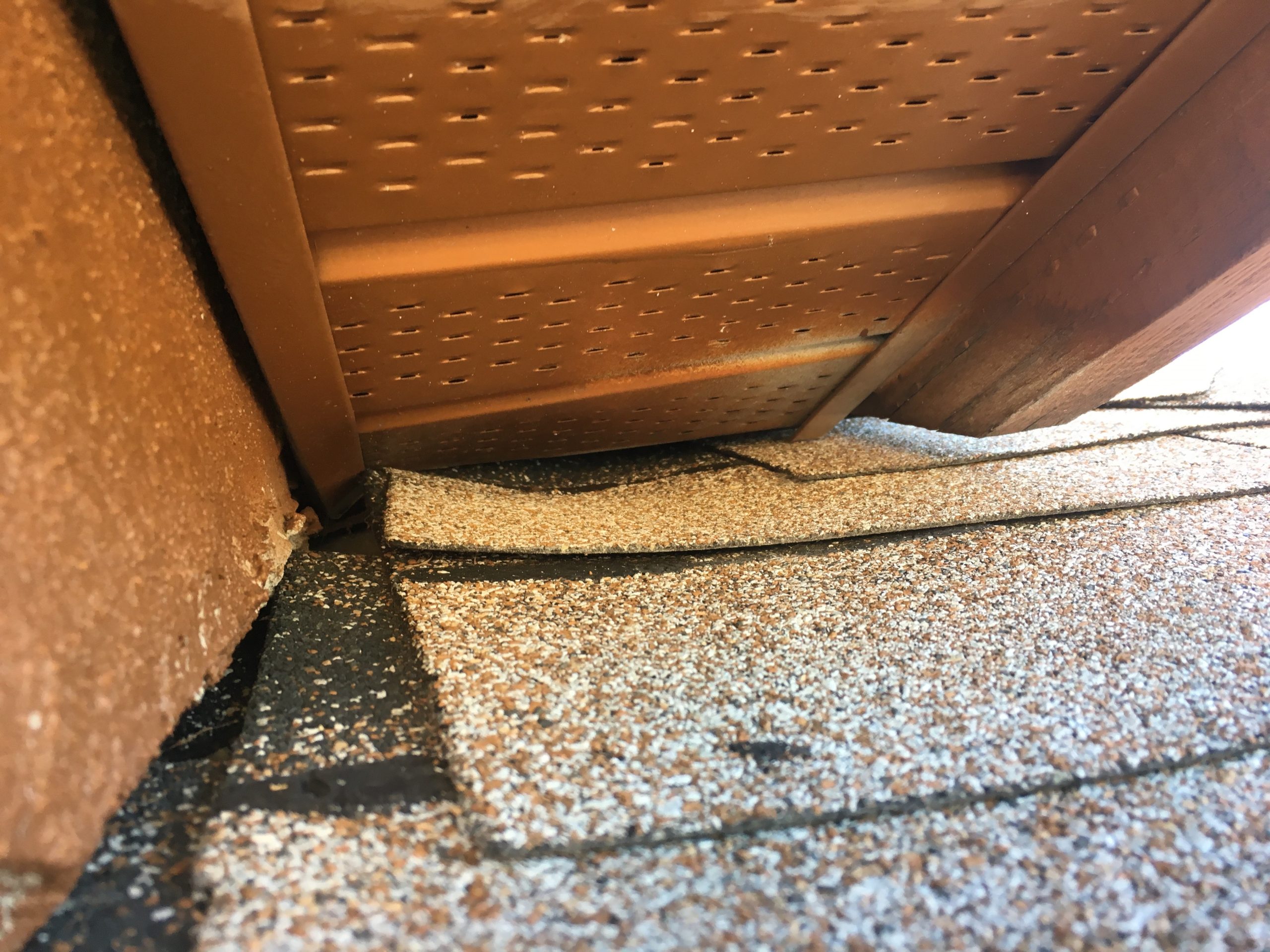
Roof Returns – This is the part of the roof that doubles back to the wall of the house. It is between the end of the roof and a home’s walls.
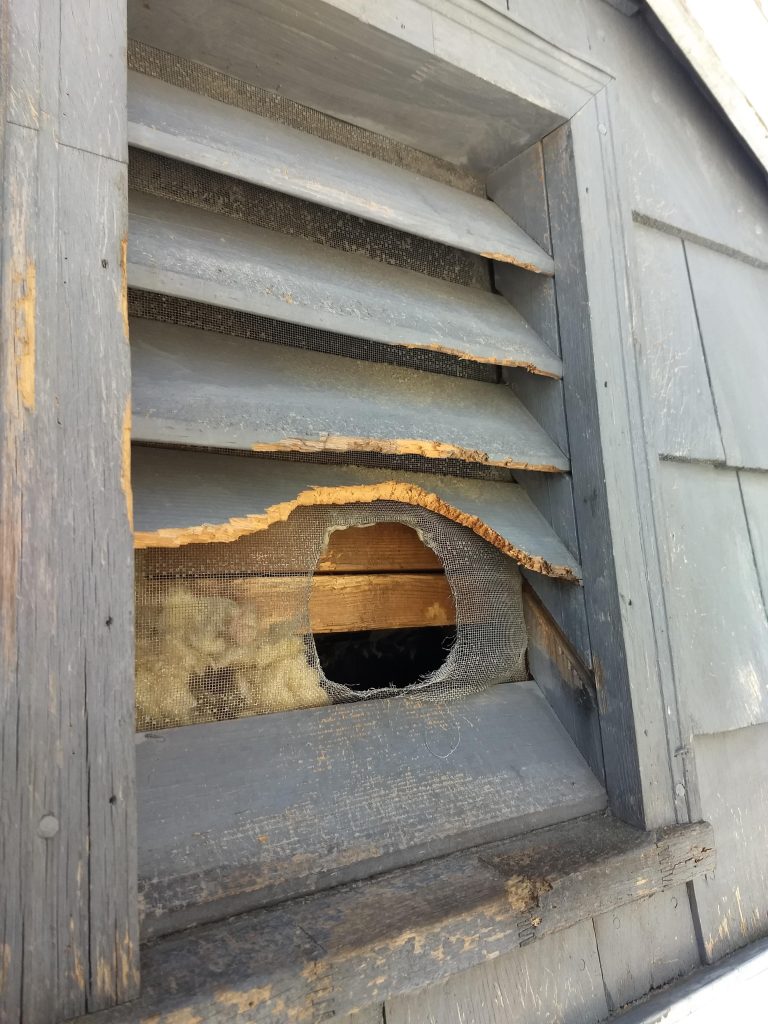
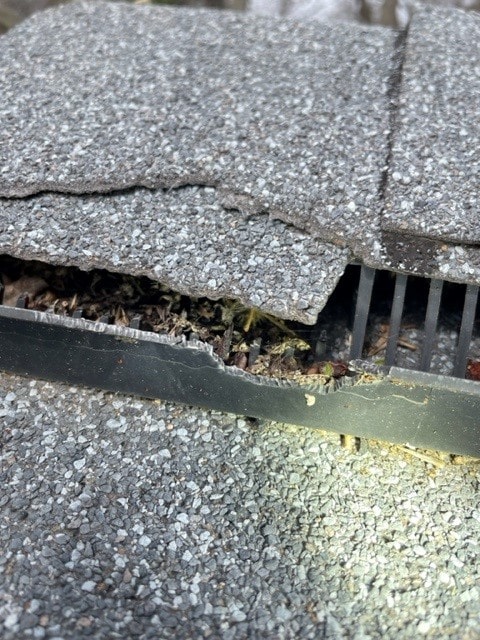
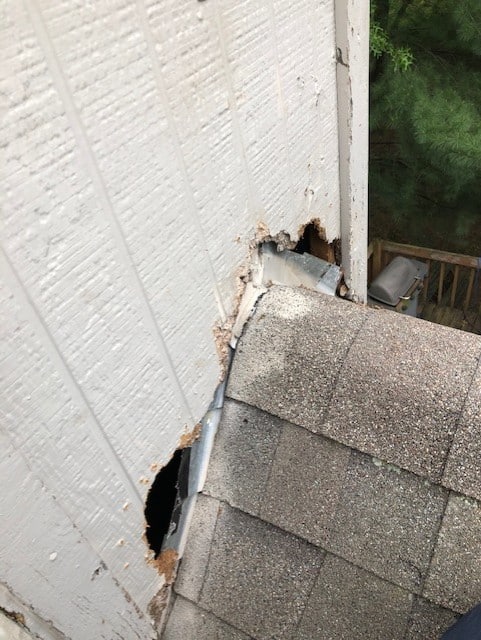
Chimneys – Chimneys conduct smoke and combustion gasses up from a fireplace, stove, or furnace and can run through the attic of a house.
Other Squirrel Entry Points
● Siding Corners – This is the trim used to keep your siding in a place where the corners meet.
● Gutters – Gutters capture rainwater and melting snow and channel it away from the house. Clogged gutters that prevent precipitation from running will cause deterioration along the roof edge through which a squirrel can enter.
● Plumbing Mats – This is rubber matting covering cylindrical vents on the roof that connect the plumbing system used to exhaust gasses.
How Do Squirrels Get Into an Attic?
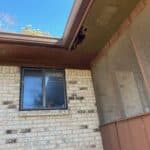

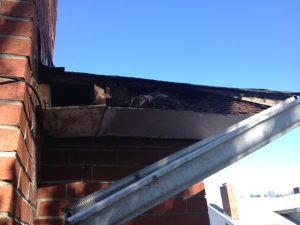
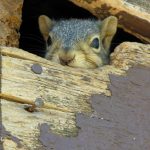


All photos provide by Critter Control wildlife service technicians
Because squirrels do not hibernate in winter, the warmth they feel coming from gaps makes an ideal winter nest. Squirrels will use their teeth to gnaw through damaged or unscreened vents or tiny gaps to enter your attic. They often use the branches of trees closest to your home or wires to get to the roof. While ideal for squirrels, their presence damages your home and poses health risks for you and your family.
Before and after squirrel damage photos courtesy of Critter Control in Atlanta.
How Do Squirrels Get Into Walls and Crawl Spaces?
As squirrels spend their days running up and down trees and jumping from branch to branch, they have a bird’s-eye view of your roof and its weaknesses. Squirrels can jump four feet vertically and jump six to eight feet horizontally.
While attics are the most common areas for squirrels to nest in homes, you should be aware that squirrels can also enter through wall vents and crawl spaces.
● Wall Vents – These are vents on the side of your home for kitchen, bathroom, and dryer fans. Since they look like a tree cavity, squirrels find them perfect places to build a nest.
● Crawl spaces – A crawl space is an unfinished space between the ground and the first floor that is not tall enough to stand in. It provides access to plumbing, wiring, and other household systems without the need for excavation. Not every home has a crawl space.
How Do You Prevent Squirrels From Entering Your Home?
The best way to prevent squirrels in homes is property maintenance. Squirrels are all around us, so while we might not be able to get rid of them around the home, there are things we can do to keep them from entering, such as:
- Seal all roof gaps.
- Cap or place mesh on chimneys and vents.
- Trim the tree branches that make it easy for squirrels to hop onto your roof.
- Remove the food sources that attract and keep them around your home. Bird seed, pet food, and accessible trash are prime squirrel attractants.
- Fence in your vegetable garden and throw nets over berry bushes.
- Squirrels have a good sense of smell. Sprinkle peppermint oil, vinegar, cayenne pepper, and coffee grounds around garden plants and bird feeders to keep squirrels away. Because scents fade over time and with rain, incorporate this into a routine.
- Use motion-activated sprinklers or lights, predator decoys, noisemakers such as wind chimes, and strips of reflective aluminum foil as a deterrent.
What NOT To Do To Get Squirrels Out of the House
- Shine bright lights
- Apply scent deterrents like peppermint oil or capsaicin
- Play a radio loudly
These popular DIY squirrel deterrents might bother a squirrel but have never been proven to work effectively. Generally, squirrels simply acclimate to these attempts. Most squirrels have adapted to live among people. Scent deterrents need to be incredibly strong but disappears quickly.
How long does it take to get squirrels out of the attic?
Squirrels in your attic will leave every morning to collect food but return every night especially if baby squirrels are present. If you expect squirrels to leave on their own, you might be waiting months for them to leave on their own.
If squirrels have used areas of your home to create a nest, it take longer to solve the squirrel infestation. At Critter Control, squirrel trapping can take a few days. Once we have confirmed all the squirrels have been removed, exclusions will take another day or two depending on the extent of the squirrel damage to the exterior of your home.
How Critter Control Gets Rid of Squirrels House
If you have a squirrel at home, call Critter Control for professional squirrel removal. Squirrels can become aggressive when approached, especially if there are kits. They are rodents, just like rats, and they carry parasites and diseases as well. Professionals are the quickest and most efficient solution for squirrel removal in your attic, walls, or crawl space. After squirrel trapping and removal, the experts at Critter Control will install exclusions on all current and potential entry points. This provides long-term, eco-friendly squirrel control for your house.
Critter Control has offices throughout the country. With over 40 years of experience and expert national, state, and local laws, Critter Control is your best choice for the effective and humane removal of squirrels from your home. Contact Critter Control today for your free inspection.
Get them out.
Keep them out.®
Experiencing a wildlife or pest issue? We can help! Complete this form and your local Critter Control® office will contact you to assist.
- How to Get Rid of Squirrels
- Squirrels in Attics
- Squirrels in Chimneys
- Squirrels on Roofs & in Soffits
- Squirrels in Walls
- Squirrels in Ventilation
- Squirrels in Gutters
- Squirrels in Crawl Spaces
- Squirrels in Yards or Gardens
- Squirrels in Trees
- Squirrels Digging Holes in the Ground
- How to Identify Squirrel Sounds
- Squirrel Tracks
- Squirrel Droppings
- Squirrel Trapping
- Squirrel Repellents & Deterrents
- Squirrel Appearance & Identification
- Species & Types of Squirrels
- Squirrel Life Cycle
- Baby Squirrels
- Squirrel Nest
- Dead Squirrels
- Squirrel Diet
- Diseases That Squirrels Carry
- Rabid Squirrels
- Do Squirrels Hibernate?
- Gray Squirrels
- Do Squirrels Bite?
- Squirrel Damage to Your House
- Squirrels vs. Rats
- Squirrels vs. Chipmunks